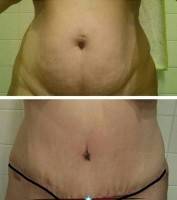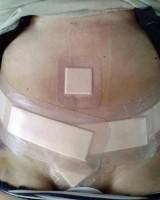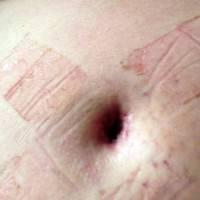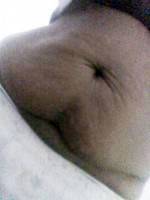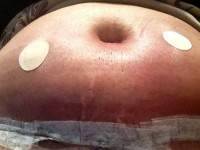Belly button tummy tuck
Belly Button & Diastasis Repair
Only in a very unusual circumstance would the umbilicus need to be removed when doing a diastasis repair. Often the umbilical stalk is relocated to a different position on the abdominal wall.
There are also newer materials than mesh available which generally have fewer complications. If you are unsure, you can always request a second opinion. (John Whitt, MD, Louisville Plastic Surgeon)
Belly button and abdominoplasty
In general, we save the belly button and repair the diastasis around it. Unless there is something unique about your situation, most doctors would make every effort to save the belly button.
Having said that, if you think about it, all the belly button is a scar after the umbilical cord is cut. Discuss your concerns with your surgeon, and also your concerns about mesh.
Remember, the most important part of getting a good result from plastic surgery is the surgeon you choose. (Darrick E. Antell, MD, Manhattan Plastic Surgeon)
Clarify abdominal hernia verus diastasis with tummy tuck
There are many options for this and this is not the only solution. I would obtain other recommendations or consultations. There seems to be some confusion between an umbilical hernia and a diastasis. Although these two are different, they do commonly occur together. (Otto Joseph Placik, MD, Chicago Plastic Surgeon)
Since I was not in the room hearing what the surgeon in question actually told you and have not had the opportunity of examining you, my comments must be general in nature. Like many of my colleagues below, I have had a large experience with women such as yourself. (As a matter of fact, I operated on one this week whose diastasis gave the appearance of a large basketball emanating from her abdomen. Perfect repair. belly button left in place. no mesh).
I have NEVER had to “remove” a belly button to perfectly repair a diastasis recti NOR do I see a role in “moving” a belly button to do so. The use of mesh is reserved to cases where the shelves of the defect (hernia or diastase’s) cannot be brought together securely (which is rare) or to bolster and reinforce such repair (more common and done in people who are more common to stress the repair (poor, thin tissues, poor nutrition, frequent coughing (ex smokers, CO PD) etc)).
In ALMOST ALL cases such as yours a standard abdominoplasty (tummy tuck) can be done, in the course of which, a secure diastase’s rec ti repair which nicely corsets and brings the tummy muscles together can be done WITHOUT impinging on nor removing the umbilicus.
I would urge you to see MORE than one plastic surgeon and have your husband or close friend in the room so both of you can hear and process what is being said. Since this operation is extremely common, I would pick the surgeon you are most comfortable with. (Peter A. Aldea, MD, Memphis Plastic Surgeon)
Diastasis repair usually doesn’t require removing the bellybutton
The most likely scenario is to “float ” the bellybutton which is done with a mini-abdominoplasty. Your situation must be very severe if your surgeon has recommended mesh, so without knowing more none of us can give you really accurate advice however.
I might suggest that you ask about using Alloderm or Strattice rather than synthetic mesh though, they are very strong but will likely feel more natural. (Richard Baxter, MD, Seattle Plastic Surgeon)
Removing belly button during diasthasis repair
A diasthasis is a weakening in the midline of your abdomen and is common after pregnancy and weight changes. This can be repaired by tightening this area. Usually, removal of the belly button is not necessary. It seems that you also have an umbilical hernia, and this is probably why your PS mentioned that belly button removal is a possibility.
An umbilical hernia may disrupt the blood supply to the belly button, placing it at risk during the repair. So, loss is possible in some cases. Many surgeons are able to immediately reconstruct a new belly button in this situation, so this is worth asking your surgeon about. Regarding your other concern, mesh is commonly used and carries low risk for infection. There are some other materials such as dermal matrix which may also be appropriate and may carry a lower risk of infection.
Using mesh or dermal matrix may be necessary to strengthen the repair and the small risks associated is probably worth taking in order to avoid a recurrence of your problem. Obviously this should not replace an in depth discussion with your own PS, so speak to your PS about this. (Matthew Schulman, MD, New York Plastic Surgeon)
Abdominal diastasis and hernia
I think he means that he might “float” the belly button. This would dictate a modified, not full, abdominoplasty. In general, we do not take off: the belly button but can lift it off from its stalk in continuity with the overlying and surrounding skin flap. Mesh has its use, but unless it is a very extreme hernia or diastasis that prevents a tight closure with normal muscle and fascia, it isprobably not necessary. But that would require an exam to determine. Some surgeon will us it as a complementary reinforcement of a repair. (Robin T.W. Yuan, MD, Beverly Hills Plastic Surgeon)
Stretched abdomen tissues
Severe diastasis repairs can be difficult as the tissues are very thin and are prone to stretching again. Mesh can provide support, but it can also become infected and that is a bigger problem especially under thin tissues. I tend to avoid mesh repairs for this reason.
I am not sure your doc plans on removing your belly button as opposed to just moving it. If your tissues near your belly button are really stretched, the surgeon kinda has to design a new one with the tissues that are left which is more difficult. (John P. Di Saia, MD, Orange Plastic Surgeon)
Rectus diastasis and belly button removal
It’s unusual to remove the belly button to repair rectus diastasis. Usually, when a plastic surgeon repairs diastasis, the belly button is incised from the abdominal skin and re-located to a new position with the surgery. Is it possible that you misunderstood your surgeon? If he insists upon removing the belly button, it may be worthwhile to consult with another board certified plastic surgeon to ascertain whether there is a consensus of opinion. Mesh is usually used with umbiical or abdominal wall hernia repair. In severe hernias, where there is not enough surrounding tissue to close the hernia primarily, a piece of mesh is used as “strength patch”; it allows closure of the hernia defect while still keeping the abdominal wall tight. It’s not standardly used as part of a rectus diastasis repair. Hope this helps. Best of luck. (Sam Jejurikar, MD, Dallas Plastic Surgeon)
